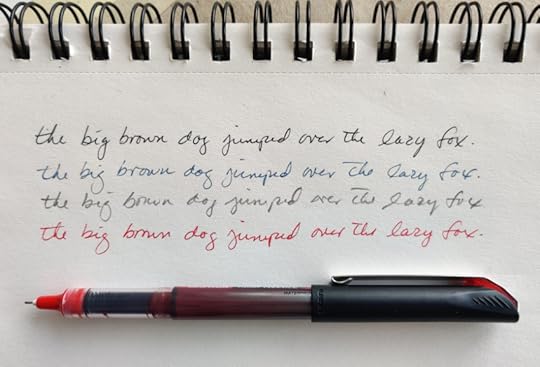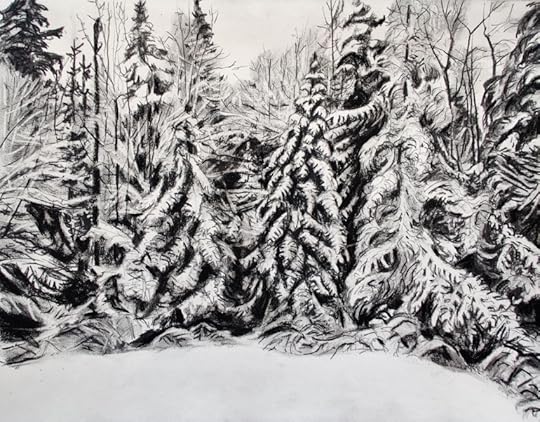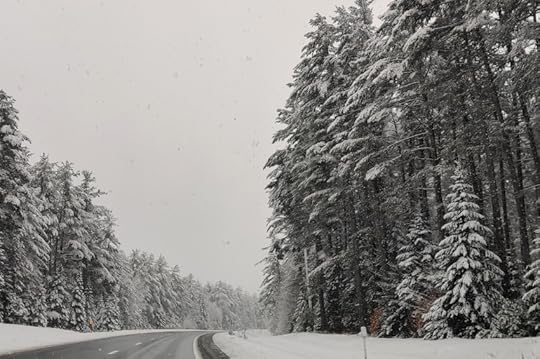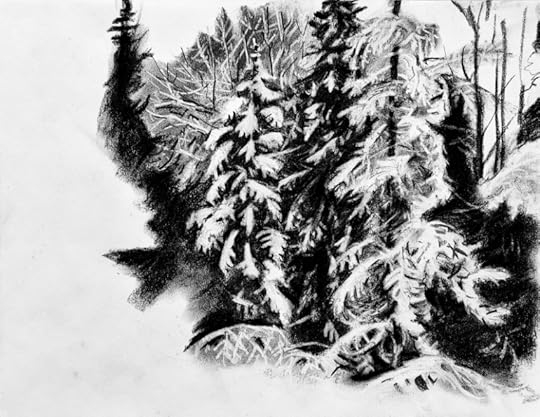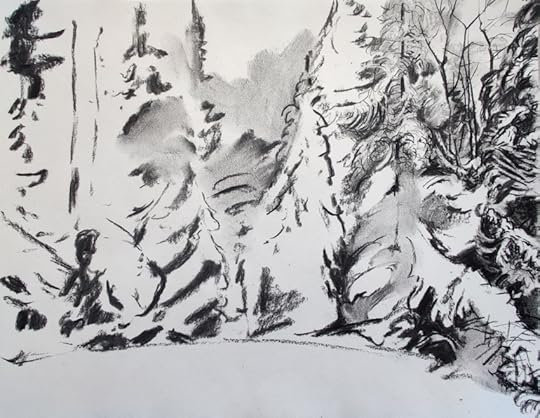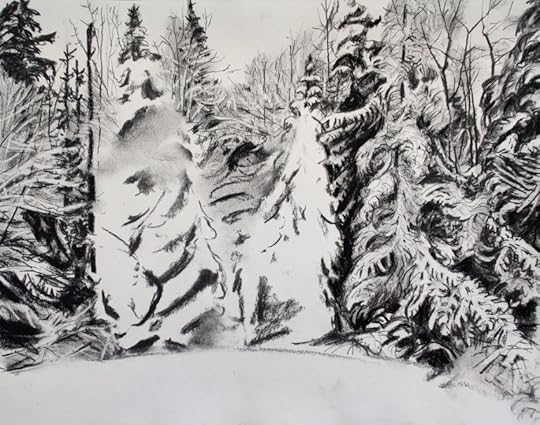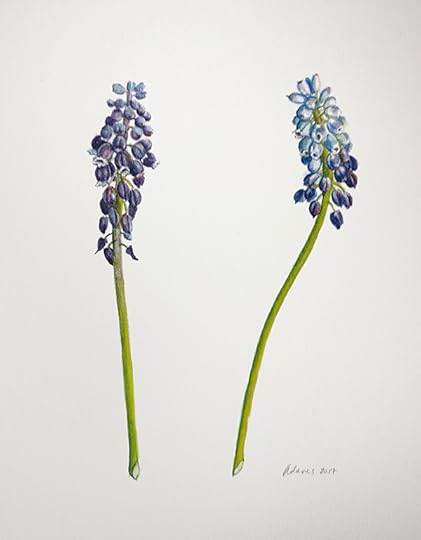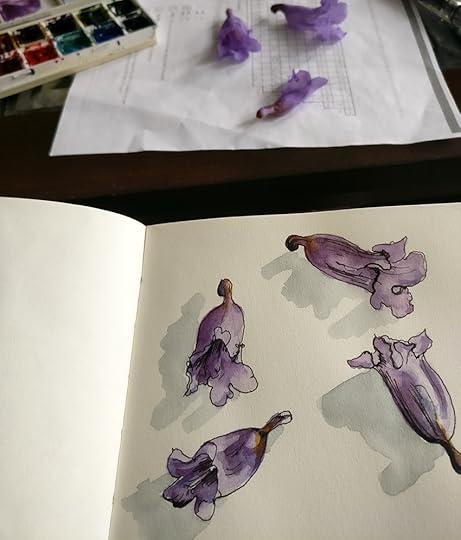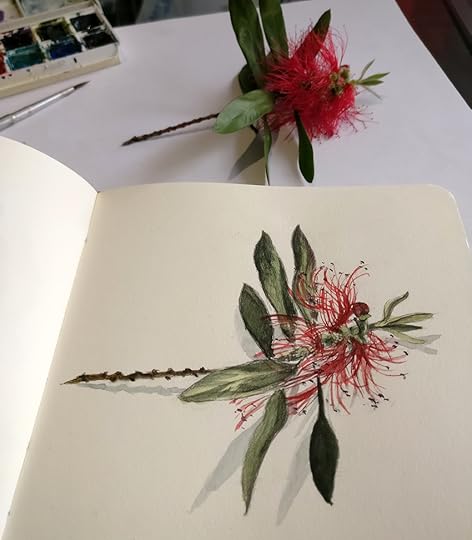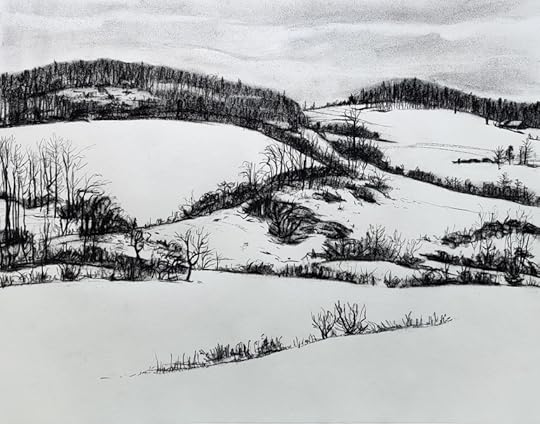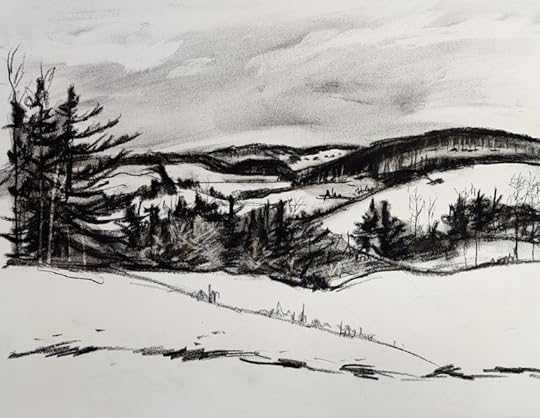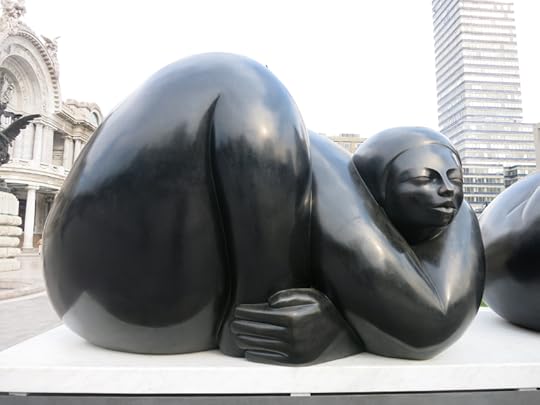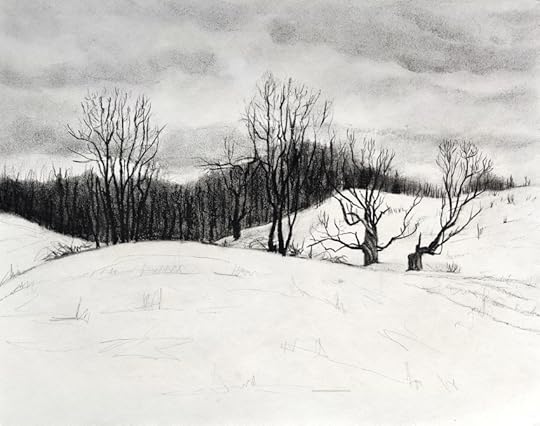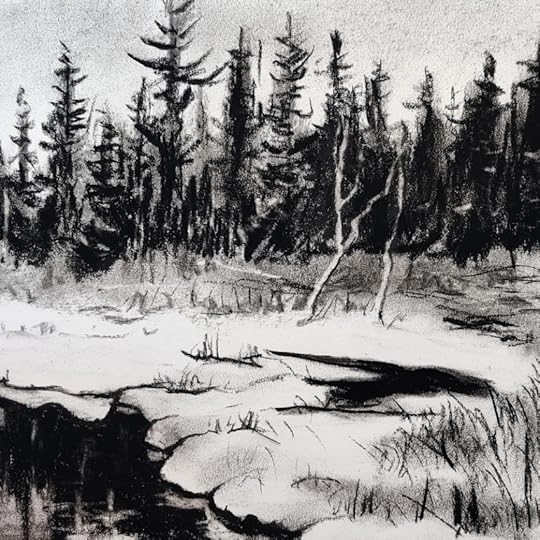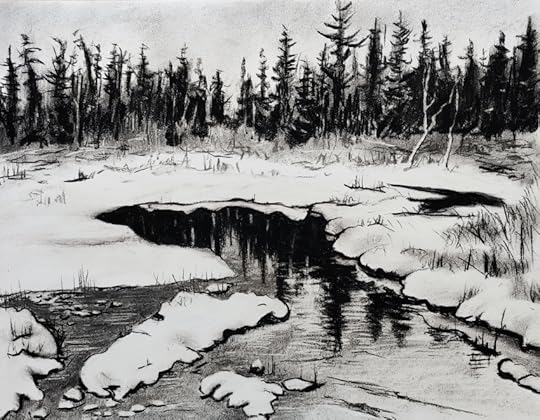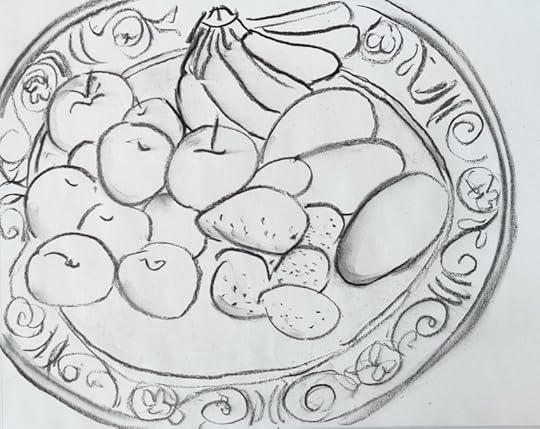Elizabeth Adams's Blog, page 10
March 28, 2023
Can We Reprogram our Brains?
Yesterday I read an article in The New York Times titled "What Killed Penmanship?" The teaching of cursive handwriting has fallen out of favor in schools, and been dropped from many state curricula. The reasons cited are obvious: we are living in the digital age; we spend so much time on our smartphones, tablets, and computers, that hardly anyone needs to be able to write by hand anymore, and certainly not "beautifully". Today, the most handwriting that many people do is to scrawl a note to themselves, or write a grocery list (though even I use my phone for that!) - so it's hard to justify forcing kids to learn to write well by hand, practicing all those loops and consistent slants. However, the article went on to talk about a site on Reddit called "Penmanship Porn" where people post and look at examples of beautiful handwriting, and also about remedial courses some people are taking, as adults, to try to improve their penmanship, or even learn how to write in a way that might make a splash on that Reddit site.
This is all quite interesting to me, as a former calligrapher, and granddaughter of a teacher of the Palmer Method who instilled that exemplar of cursive into me at a young age. I still have some of the Palmer Method pens she used - the kind with a nib you inserted and then dipped into an inkwell. Imagine that. My own handwriting, however, has deteriorated a lot over the past thirty years: proportionately, no doubt, with the marked improvement in my typing.
I'm not as concerned about whether or not kids learn cursive handwriting in schools from a motor-skills viewpoint -- after all, no one can argue that there's not major dexterity involved in typing on a phone with both thumbs at high speed, and most young people seem amazingly good at that. The brain's ability to form ideas and thoughts and transform them into words is probably not hugely different when the end result is written with a pen than when it's typed - although, let's admit it -- there's a big difference between texting and writing a long, thoughtful letter to a friend.
But because the development of writing, as symbols made by hand, was such a critical part of human development itself, I do suspect that some sort of evolutionary neural pathway is no longer being used when we do not use our hands in this way. Maybe another question to ask is, "What Else Died when We Killed Off Penmanship?" I'm being somewhat facetious: plenty of people, like my left-handed husband, never learned cursive handwriting, and that fact didn't interfere with either his dexterity or creativity. It's not cursive that's at issue: it's what happens when we write words and thoughts down by hand. It's a slower process, related to drawing, that requires us to think carefully -- there's no delete button -- and use fine-motor coordination, as our brains navigate a complex communication pathway between mind, eye, and hand -- and from there to the intended recipient of whatever we wanted to record or communicate.
What specialized and complex tasks DO we actually use that mind-eye-hand pathway for, anymore? We brush our teeth and dress ourselves, we might prepare some food; some of us play sports; we certainly type. But fewer and fewer people play instruments, learn to draw, learn to write beautifully, know how to do needlework or woodworking, make a really good meal from scratch without taking all night, throw a clay pot, know how to fix their own cars or a leaking faucet -- the list goes on. Cars are a good example -- even if someone might want to learn how to service their own car, most vehicles have become so complex, with computer-controlled systems, that it's not even possible. In this sort of world, where the knowledge, desire, and need to do such things are disappearing, I wonder if the human being isn't becoming something quite different from what we were in all the preceding centuries. How are our brains changing in the process?
When I searched for information on this topic, it's predictably voluminous, but also rather vague. Scientists acknowledge that technology has contributed to weaker memories, attention spans, and information-processing ability. On the other hand, so many tasks that we once had to do in our heads, slowly and carefully, have become rapid and automatic -- and who doesn't prefer that? Going back to the old ways has become inconceivable.
But in terms of the loss of specific practices like handwriting or drawing, there is less written. What science does know is that our brains adapt and change in response to external stimuli but also what we tell them to do: we actually have some control over this. Repeated behavior reinforces certain neural pathways, and causes disused ones to atrophy -- though in many cases this can be reversed. Being repeatedly exposed to disturbing media that upsets us, for instance, can cause our brains to form pathways that automatically end up stimulating negative thoughts, worry, and stress. When we are under stress, certain hormones are also released that affect our bodies. One of the best ways to interrupt this destructive process is to reprogram our brains through making time for creative activities that help us to focus and concentrate in different ways. When we draw, write by hand, doodle, play an instrument, knit or sew, whittle a piece of wood, make a paper collage or scrapbook -- as when we meditate, or do yoga -- we are giving our brains a break and stimulating them to strengthen positive pathways, relax our bodies, and decrease stress. But those activities need to become a regular practice in order to have a real effect.
While these kinds of activities have declined since their last resurgence in the 60s and early 70s, it does seem to me that there is a counter-reaction now, and that more and more people want to step away for a while, slow down, and learn to do something contemplative -- and perhaps also useful or beautiful -- with their hands and bodies, perhaps driven to it by wanting something, anything, that will help with the anxiety of living in our chaotic world and the constant barrage of upsetting news. Last week I went to an evening meeting of a new knitting club at the local library -- and it was eye-opening. More about that in a subsequent post!
March 24, 2023
Inspiration and Perspiration
I can feel that I'm starting to be ready to wrap up this series of winter drawings, at least for this year. There are two or three others I'd like to do if I can. But this one beckoned persistently, and because I knew it would be a real challenge, I decided I'd better go for it while I still felt inspired.
On the day I saw this scene, we had been fortunate enough to drive through the Adirondacks just after a heavy snowstorm that had thickly coated every single branch of every tree -- the atmospheric conditions must have been very particular. Since the snowfall, there had been no wind, and we were nearly alone on the roads, so it felt like a sort of suspended animation. We left the main road at some point and drove up through deep woods on a narrow dirt road to its top, and then back down into a hollow where there was a stream. The road was icy, and we figured we'd better turn around while we could. Jonathan got out to take a picture of the water, but on the other side of the road, long ago, someone had made a semi-circular clearing, now ringed by this group of trees, completely covered with thick fresh snow: mostly spruces and larches with lacy branches, standing heroically like characters in a play, or guardians of the woods behind them, flanked by a chorus of bare deciduous trees raising their white arms and fingers. No wind blew, no birds sang or hopped from branch to branch to cause cascades of snow -- just the utter stillness of deep midwinter woods on an extraordinary day.
At the time I hadn't planned to do any drawings, but as this series progressed, I kept coming back to that semi-circle of trees, and felt I needed to try.
The complex nature of this forest scene required a preliminary sketch (above). The overall approach was too simplistic and too contrast-y, but I was just trying out different approaches. I wasn't too happy with the spruce tree, but liked the larch on the right, and felt that the handling of the trees in the background would probably work. So then it was a question of beginning again for real, and summoning the patience for what I knew would be a long, challenging effort.
In most of the drawings in the series, I've been able to work back and forth across the whole scene, or from top to bottom in a logical way. But here, I couldn't do that, because there was so much going on that I kept losing track of where I was. So I developed the picture in vertical slices, worrying all the time that I wouldn't be able to integrate the entire drawing across the picture plane. It was complicated, eye-fatiguing, and seemed like it took forever -- I worked on it off and on for three days.
Then, once I was almost done, I had to work quite a bit on the picture as a whole to make the different areas relate to each other, and bring the overall greyscale into harmony. There are some things I'd do differently if I were to do it over (that's not going to happen!) but in general I'm pretty happy with the final result.
--
This process made me think a lot about what happens when inspiration is hard to hold onto -- how do we keep going toward our original goal when things get tough? It's so easy, and tempting, to give up at that point. Part of being a professional artist, designer, writer -- or pretty much any other artform -- is learning how to stick with a project, no matter how difficult it is or how many obstacles come up, and bring about a satisfactory conclusion. If the client has hired you, then that is your part of the contract. Likewise, if the public has bought a ticket to the concert, there is an expectation of excellence.
But for the professional, this also creates a difficulty. When is the result "good enough," and when is it extraordinary? Because most of us know, deep down, that there is a difference. In music, as in all the arts -- and in sports, for that matter -- peak performances do not happen every day. The public may not know, because technical virtuosity may be there, just as facility in drawing or painting may be there, and the public tends to recognize and reward virtuosity. But technical brilliance alone doesn't create an inspired performance or a truly special work of art; it is not the same as artistry that somehow, intangibly, conveys what is going on in the heart and mind of the artist and conveys that to the audience in a truly moving and memorable way. For that matter, the artist often doesn't know why a particular performance felt different, or why a particular painting or drawing or poem happened as it did: you can't "will" it to happen. The hours and hours of practice and preparation that add up to technical facility are the means to the end, but they are not the end in themselves.
There are an awful lot of professionals who do coast along on a combination of technique, repetition of what has been praised or popular, and doing work that is "good enough." Pushing yourself to do better, to continually grow, requires taking risks -- and that means some of the time you're going to fall short or fail. It also means once in a while, maybe not often at all, you're going to do something that confirms why you began this journey in the first place.
I'm not saying that this drawing is extraordinary in any way, just that it was more challenging than the others I've done so far, and required digging deeper into myself to keep going and pull out a result that felt satisfying -- it asked more of me. Looking back on the last two months of work, I can see that I've learned a lot.
I always pay attention when I feel my inspiration running thin. Perspiration - pushing through to a good result - can only take you so far. The poet Osip Mandelstam once made the enigmatic comment that he always knew when he was getting close to the end of a cycle of poems when he started writing about the stars. He had discovered a clue in his own work. I don't have that; I just have a feeling that I'm not quite there on the razor's edge, the way it was when inspiration first hit and the first works were coming. But concentration and persistence can bring you back to a place where inspiration once again takes over: that's the intangible lesson of this drawing, and maybe of those moments standing in the circle of snow-covered trees.
March 20, 2023
Cassandra at Twenty
Today this blog celebrates its twentieth anniversary. I almost forgot, because I was focused on it being the first day of spring: an event we're eagerly anticipating up here but about which there's been precious little evidence, other than the maple sap running, and brighter, longer days. However, I'll post these grape hyacinths in the hope that we'll be seeing real ones -- in about a month.
The craziness of living in, and enduring, such a northern climate may be matched by the craziness of having blogged here for twenty years. Or perhaps I'm just stubborn. Social media was supposed to be the death of blogging, and it did do-in most of the blogs that started when mine did. Other platforms were touted as the next best thing, but I think most bloggers just got fatigued. Keeping up a blog, trying not to repeat yourself, and finding something personal to say is hard enough over years and years, but when the readers and commenters start to go away, it's even harder to remember why you began it in the first place.
But I do remember: I was a journal writer and determined letter-writer, with a well-established practice, and blogging fit me to a T, not only because it satisfied those same urges, but because it also added the possibility of a visual component. The latter, of course, became the raison d'être for Instagram, and I have loved being part of a community of artists and photographers there. But for those who want to write regularly and seriously, nothing has really worked as well as blogs, and for someone like me who's a visual artist as well, and wants to own her own website rather than be data-harvested at every click of the mouse and keyboard, blogging has continued to be the best choice. I guess stubborn perseverance has just kept me at it, because first of all I write and make a record of my art for myself -- I'd do this anyway -- but how much better it is to share it with you, communicate with you, and get to know each other.
Jacaranda blooms in Mexico City, back in March, 2017.
The doubts I was having about blogging a few years ago have mostly disappeared. It's clear to me that this is where I belong, and that it works for me. Adding an art education component will satisfy another strong urge in me: to teach and encourage others who may have always wanted to draw or paint, or who want to do it better; or encourage those who loved making art when they were kids, only to get discouraged or distracted along the way.
A recent change is that I have begun mirroring this blog on Substack. The content will be exactly the same, but if people want to subscribe there and receive a notification via email when there's a new post, that's an easy way to get one. (I know some of you don't use feed readers, which is another possibility. While I do always post a link to new posts on Facebook, you may not be there either.) Substack posts also receive a link on my Twitter feed. Many Substack writers are trying to get people to subscribe for a monthly or yearly payment. I'm not going to do that; the content here has always been free, and I see no reason to change that. The only possible exception would be if I decide to offer formal online art courses, but that's a ways into the future and won't impact the blog at all.
Red bottle-brush tree bloom, from the same Mexico City trip.
Whether you have been reading my words and looking at my pictures for twenty years or have just found me recently, I want to say thank you. It's humbling to know that people come here repeatedly, looking for some solace or calmness in the difficult days we are all facing, and I'm glad that the writing and art which help sustain me also, sometimes, help to sustain you. After all, that's why we think deeply, why we create, and why we are here together. Thank you for visiting, and for encouraging me with your presence. If you've never left a comment, that's absolutely fine, but please don't be shy -- I try to respond personally to all comments, and will be really glad to hear from you. And for those of you who've become my friends over the years, whether virtually or in real life, and in so many corners of the globe -- how amazing it is that we found each other, and how everlastingly grateful I am for the ways in which we enrich each other's lives!
March 17, 2023
The Myriad and the Particular
from my travel journal, handwritten on a flight to Mexico City, this week in March, a number of years ago:
We had left the snow-covered earth behind and entered into a dim space above the indistinct but thick fog below, and a cloudy but brighter layer above.
Somewhere, about midway in our journey through this region, we came upon a little atoll of clouds. They were small and delicate and softly reflected the light of the unseen sun, still hidden above yet more layers of fog. These island clouds were bathed in a pale golden light and their tenderness touched something in me so suddenly and unexpectedly that I felt I might weep.
I brought my face close to the glass and looked down on them as if they were a dream of a place I must remember, and then they were gone behind us and their meaning -- in this middle world between fog and obscurity -- also stayed behind. But I continued to ponder them as we climbed out into that upper world, above all the clouds, where the setting sun reigned brightly, finally making himself known.
March 13, 2023
Winter Mysteries
If there is an ultra-typical view of central New York that feels like it embodies the sense of "home" to me, it's this sort of scene: pastures bordered by hedgerows, wooded hilltops, tall deciduous trees and scrubby brush, all arranged in a zigzagging patchwork that carries the eye up and down and across the rolling hills. It's beautiful in every season, but you can see the shape of the land better in the winter, when the contrast is greatest between the fields and the trees; in the summer, pretty much everything is green, or shades of green, brown, and yellow. After this winter's deep dive into the landscape, I'm sure I will be making paintings or doing pastels in the more colorful seasons too, but I'm learning a lot about looking and about what has always attracted my own eye, attention, and heart to this particular type of terrain and its ecology.
The picture at the top of this post was done after the one below. These are two views of the same range of hills, north of Hamilton, NY, as you're heading toward Rt 20.
The top picture took a quite a bit of time - an hour or two -- but the bottom one was a deliberately fast 13-minute sketch. In the video below, you can see the whole sketching process condensed to a minute and a half, which I find both amusing and also mystifying; I've watched it a number of times and still can't figure out how the brain and eye, intellect and intuition actually do this. There's a lot about the arts, as well as many other human endeavors, that will always remain mysterious to me, and beyond the realm of what we "learn" to do or can explain.
For instance, this weekend we watched Mikaela Shiffrin break Ingmar Stenmark's record for world cup skiing victories -- a record many thought would never fall. The qualities that set her apart are vastly more than flawless technique and great physical conditioning; there's her uncanny feeling for the snow in a wide range of conditions, her ability to "see" the course in her mind, and then ski it tighter, faster, and more perfectly than anyone else, and the whole constellation of mental and emotional mastery that's necessary to win so consistently over a period of years. My husband was a ski racer in his youth, and we both skied a lot in our 30s and 40s; he was incredibly good and taught me a lot about the sport, while I became a rather foolhardy advanced intermediate. We stopped, eventually, after some injuries that threatened to become chronic problems as we aged -- and also because skiing with people with cell phones began to take away the solitude and quiet we loved in that other world of the mountains. But those long, cold, sunny, foggy, snowy days remain etched in my mind, and in my dreams I am sometimes still skiing -- and it still feels fantastic.
I never understood exactly how the mind and body managed to coordinate themselves in order to allow this. You learn "how", but then there is a kind of letting go, where you aren't thinking about it in the same analytical way all the time. For me, that was always a tenuous balance, because I didn't grow up on skis, and I was never that good at it, but under optimum conditions, sometimes I could experience the freedom. The gulf between me and a top racer like Schiffrin is, well, about as big as the distance from here to Switzerland, and yet I can appreciate what the human body is capable of doing, both for someone like me who grew up among little un-skied hills like these, to learn to ski on much bigger ones, and for the people at the top of the sport -- or music, or art, or dance, or many other disciplines. It's nothing short of amazing. The thing is, we all do many things every single day that are an astounding combination of learned and intuitive actions. We seldom stop to think about them, but we should marvel at ourselves now and then, for simply being able to read, brush our teeth, cook an egg. It is not insignificant at all.
March 8, 2023
In Praise of Women, and in Fear for Them
Sculpture by Jiménez Deredia, Mexico City 2016
On this International Women's Day I am grateful for the strong women of my family who raised me to be confident in myself and my intellect, and with high expectations of what I might accomplish. Without them, it's hard to imagine what would have become of me. And I'm grateful for growing up at a time when women's rights were at the forefront of American consciousness, because it meant that doors opened for me that weren't open previously, and I was able to benefit from the fight waged by women ten, twenty, thirty years older on so many fronts, from access to education and a broader range of career choices, to contraception and abortion, better pay (even if not equal), the option not to have children and stay (or become) single without stigma, and so many other areas of life. In the late 1960s and 1970s it felt like the world was finally opening for us, and that equal rights -- enshrined in a constitutional amendment --were certainly around the corner.
We can't dismiss how much has been accomplished, but I'm dismayed to reflect upon how wrong we were on the political side of things. Fifty years later, and there still hasn't been a woman president, while political leaders from Hilary Clinton to Nancy Pelosi have been mocked and vilified by the conservatives. Young women today have less control over their bodies than we did, less access to female health care, and even run the risk of being prosecuted in some states for their choices. The number of female victims of gun violence, domestic violence, rape, vicious attacks on social media, and death from opioid addiction, depression and suicide, are staggering. These statistics are not just shocking, they're despicable.
And the plight of many women of minority race, ethnicity, non-hetero identity, or who are simply poor, is far worse. This is true in every developed country, and of course even much more true in many other places in the world. How can we possibly begin to address the great injustices these women face when simply to be female continues to place one at a disadvantage from birth -- at best -- and in actuality means that our risk of everything from marginalization to oppression to physically harm is greater, just for the fact that we are female? And yet, that is exactly what we must do, now perhaps more than ever. Because the women who "won" some of the advantages back when I was young, and have been able to have better lives as a result, were more likely to be white and economically privileged, like me.
I'm thinking today of the courageous women I met in Mexico City on this day four years ago, demonstrating against the violent "disappearance" of so many Mexican women. I'm thinking of my friend Shirin and what she has told me about women today in Iran. I'm thinking about refugees I have met from Africa -- women who escaped terrible situations and survived journeys toward a hoped-for freedom; some of whom were able to gain asylum and some who were deported to an uncertain fate. I'm thinking of women in detention centers, or whose bones now lie in the desert near the US/Mexican border, or at the bottom of the sea.
And I am thinking about women in general: our strength, our resilience and resourcefulness, our endless ability to do what we have to do to care for those around us in spite of everything that life throws at us, our ability to form enduring and powerful friendships, and, most of all, our ability to love. What would the world be without us?
So for me it's a day of renewed commitment to help the women who are younger than I am in whatever ways I can. To try to help them find their way and their own strength in a world that has more opportunities than we had, but is harsh, hostile and frightening in ways we never had to experience when we were their age. How I hope that, in fifty more years, equality of all people will be much closer to a reality! But it will never come if we sit on our heels waiting, or ask meekly, or expect change without fighting for it, because this is a fight that will never be over, so long as the powers-that-be are in charge of the world.
March 2, 2023
Old Apple Trees
The latest in my series of winter charcoal drawings of upstate and central New York is this one, of a pair of old trees in a field - probably apple trees, I'm thinking. They touch something in me; perhaps it's the way they are still growing in spite of losing limbs and, in the case of one, practically its entire original trunk. Maybe it's because they look like a pair. But it's also because finding old trees like this feels typical of such a place, where people have been farming for a long time. Perhaps there was once a homestead nearby. I like the way these trees, with their individual personalities, stand in the foreground, set off by the indistinct woods in the little gully behind the hills; it makes me want to walk there, climb up the hill behind, see if there's a stream. I'm sure deer like these trees too, and can be found beneath them in the fall, eating apples.
It's difficult to get good photos or scans of these drawings; even when I work on them in Photoshop, I find that favoring the bright white of the snow means losing a lot of detail and grey tones in the trees, but retaining those tones means the snow is too dark. I've got a project in mind for this series, so I need to solve that technical problem, no doubt with some help from my partner who knows all about black-and-white reproduction.
But in real life, I can see that progress has been made. I pinned all the drawings up on my studio wall - four of them are still at the lake -- and was pleased to see how they talk to each other, and how together they start to add up to something more interesting than the individual drawings. That's encouraging.
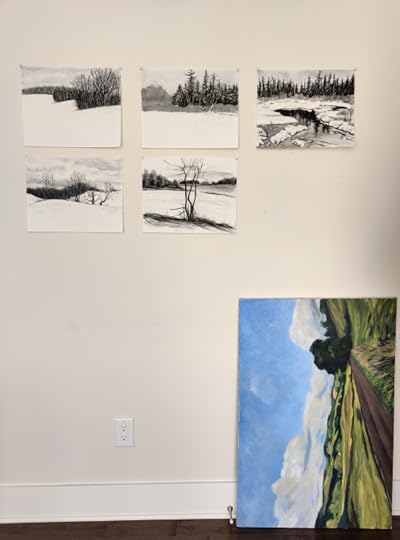 We're having more snow here in Montreal today, with another storm coming this weekend. I figure I have just this current month to continue in a winter frame of mind, so I need to keep at these. There are nine so far, including two that are sketches, and I'd like to have at least twelve to choose from, better yet fifteen, by the time spring can be felt in the air, and the snow begins to recede at last. One of the drawings I plan to do is of the same field you can see in the summer painting, standing on the floor.
We're having more snow here in Montreal today, with another storm coming this weekend. I figure I have just this current month to continue in a winter frame of mind, so I need to keep at these. There are nine so far, including two that are sketches, and I'd like to have at least twelve to choose from, better yet fifteen, by the time spring can be felt in the air, and the snow begins to recede at last. One of the drawings I plan to do is of the same field you can see in the summer painting, standing on the floor.
February 25, 2023
Drawing Conifers
Click on "PLAY" arrow, then the box in lower right to view full-screen.
-----------------------------------
Drawing conifers is different from drawing deciduous trees, and it's an example of where "what we think we know" can get in the way of "what we're actually seeing". We all have a kind of "idea" of what an evergreen tree looks like -- most simplistically, think of a kid's drawing of a Christmas tree -- but most of them don't actually look like that. Not only is the overall shape and arrangement of branches difficult to capture, it's easy to make evergreen trees look very flat, like paper cutouts, because it's hard to see and depict the branches that come toward us and are essentially foreshortened. We don't see bare deciduous trees that way: what we see is a silhouette of the branches against the background or sky, which is easier to understand and capture in a drawing, even if the arrangement of branches is complex. But unless you are drawing an isolated evergreen tree in detail, you really don't need to struggle with this problem, and there are ways to make it easier to convey the feeling of a forest of conifers, or a mixed forest, without getting bogged down in details.
Detail of yesterday's drawing
In the video demonstration, I'm showing how I approached the conifer forest in the drawing posted yesterday, by making a new drawing of just the background right section, and explaining the process as I go along. Obviously this isn't aimed at beginners, because it's a response to a comment by someone with experience who had a specific question, but I hope you'll find it interesting to watch anyway. I don't know about you, but I have a fascination with how-to videos, especially when the subject is art, or cooking, sewing, ceramics, or other creative disciplines, where we start with nothing and end up with a finished "something", often something quite beautiful. (I've also been known to get fascinated by hair styling videos.) So I have to make sure I don't go down the famously time-draining Instagram rabbit-hole.
So here's where you come in, even if you have no artistic ambition! I'm using these videos as a way to work out how to do the photography, the narration, the video editing, the titles -- all of that. J. helped me with the camera mount, so this time the drawing paper is straight and we're looking down on it directly and squarely, which should be a lot easier for you as the viewer. I'm looking for feedback, so please let me know what works for you. I'd like to know if you'd prefer to have some sections fast-forwarded or if you like seeing the whole process as it is shown here: does the video bog down, or is the pace OK? (You can always grab the red circle on the leading edge of the video time-indication line, and drag it forward to the right.) Also, I am referring to a photograph as I work - would it help to see it again from time to time in the course of the video? What sorts of instructional videos would interest you the most? I will be doing an entry-level video soon, talking about drawing media and tools.
Thanks very much for your input!
-----------------------------------
Note: we are dealing with the illness and possible end-of-life of our beloved 14-year-old cat, Manon. Making this video was part of how I distracted myself and tried to look forward this past week. I know many of you have been through this before, as we have -- it's never easy. I find myself pretty much unable to write about her, but wanted to share this news with you.
February 22, 2023
A Winter Stream in the Adirondacks
My weekend project was this charcoal drawing of a stream near Lake Piseco, in the southern Adirondacks. We had stopped by a culvert in the road where the stream passed underneath it, and I got out and took some photographs in both directions; that was late January and the stream was flowing strongly -- which seemed unusual for that time of year, no doubt a consequence of the warming climate. Lake Piseco is a big body of water, and normally is a haven for ice fishing, but we saw very few ice fishing shanties out on the ice this year.
There were lots of challenging aspects to this drawing, from depicting the conifer forest in the background, ringed by shorter bare shrubs, to the mounded snow and trees reflecting in the flowing water. I simplified the scene from what it actually looked like, where there was snow on every branch, and the brush and twigs coming out of the snow seemed much more complicated and detailed. This little 38-second time-lapse shows how the drawing evolved:
Over the past couple of days I made a short demo video just about drawing the conifers in the background, in response to a request made on the previous video post -- I'll post that tomorrow or the next day.
February 20, 2023
Still lives in black and white
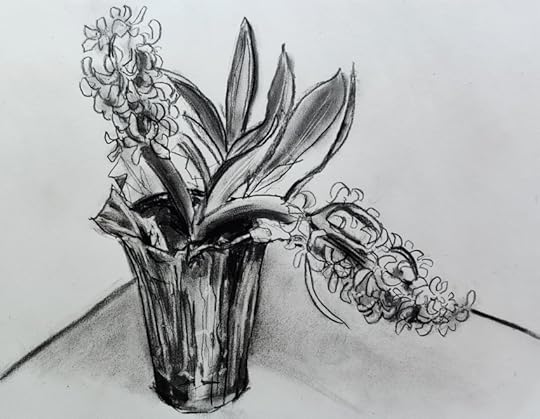
Hyacinth in a foil pot. Charcoal drawing in Fabriano sketchbook, 14" x 11".
The monochromatic exploration continues here, along with the snowy days and grey skies. Unlike our neighbors to the south, we've had snow on the ground pretty much all of the time since December. Friends who have a house in the country said there was three feet of snow on the ground, with snowbanks towering well over four feet. So it probably makes sense that I'm still thinking in black-and-white, although I'm missing color and thinking about getting back to it -- this week I've prepared four birch panels for eventual paintings in oil or acrylic.
There are a couple of still lives that I haven't posted yet. The potted hyacinth was a most welcome gift from a visiting friend.
And here is a plate of fruit, drawn very quickly. I like the freedom and spontaneity of this drawing.
I'm continuing on with the series of charcoal landscape drawings, and did a new one last night, not from central New York, but of a stream in the Adirondacks. This one began as a start of a response to a comment on the last post - a reader asked for some guidance about drawing conifers, because she's right that the approach needs to be different from what I said about drawing deciduous trees. I'll respond in more detail to her question with a post about that drawing later this week.
How's the weather where you are? If you're in the northern hemisphere, is spring evident -- or do you live somewhere that stays warm? If so, please send some sunshine and flowers our way!

